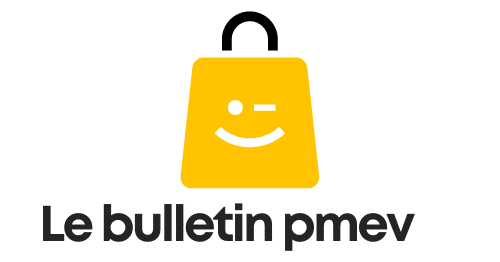How Can Technology Enable Precision Viticulture for Enhanced Wine Quality?

In an era where data-driven decisions are the norm, even the wine industry is not immune to the influences of technology. The use of technology in vineyards, known as precision viticulture, is currently reshaping the industry. This approach utilizes various technologies to manage vineyards, assess soil health, control water usage, monitor the vine canopy, and even predict grape yields. All these processes are guided by the pursuit of one thing: quality. But how exactly is this achieved?
This article discusses how different technologies are playing a pivotal role in enhancing wine quality by enabling precision viticulture. We will delve into the role of data, the relevance of Google scholar and Crossref in our quest for knowledge, and how these technological elements ‘wine and dine’ together for superior outcomes.
A lire en complément : What Are the Implications of Gait Analysis Tech in Smart Footwear?
The Role of Data in Precision Viticulture
In viticulture, data is the magic potion that reveals what cannot be seen by the naked eye. Data can uncover patterns, trends, and correlations that might go unnoticed. Thanks to sensors collecting information on everything from soil moisture to sunlight exposure, it’s now possible to create a detailed picture of what’s happening in a vineyard at any given moment.
Data analytics can also be applied to predict future events or outcomes. For instance, predictive models can estimate the amount of water needed for a specific plot of land based on historical data coupled with current weather conditions. Or, they can forecast the likely grape yield based on the vineyard’s canopy size.
A découvrir également : What’s the Role of Robotics in the Future of Personalized Retail Experiences?
Without a doubt, this new wave of data collection and analysis is allowing vineyard owners to make more informed decisions, leading to improved grape quality and, by extension, superior wine.
Harnessing Technology for Water Management in Vineyards
Water management is a crucial aspect of viticulture. Too much or too little water can lead to poor grape quality and significantly impact wine production. Technology is helping vineyard managers to take the guesswork out of irrigation, ensuring that vines get just the right amount of water they need.
Different sensors and technologies are used to collect data on soil moisture levels, weather conditions, and the vine’s water needs. Depending on the readings, an automated irrigation system can then adjust the water supply to meet the vine’s exact requirements. This precision water management not only optimizes water usage but also contributes to the production of high-quality grapes.
The Impact of Google Scholar and Crossref on Viticulture
In a knowledge-driven industry like viticulture, staying abreast of the latest research and developments is crucial. Google Scholar and Crossref are two platforms that provide access to a wealth of scholarly articles and research papers on the subject.
Google Scholar is a freely accessible search engine that indexes scholarly literature across many publishing formats and disciplines. It provides a simple way to broadly search for scholarly literature related to viticulture.
Crossref, on the other hand, is a registration agency for digital object identifiers (DOIs), widely used in scholarly literature. It provides a way to link and discover related research articles, which can be extremely valuable for vineyard owners and managers looking to stay ahead of the curve.
The Power of Sensors and Technology in Soil and Canopy Management
The use of sensors in viticulture is revolutionizing the way vineyard managers monitor soil health and manage the vine canopy.
Soil sensors collect data on various parameters like soil moisture, temperature, and nutrient levels. This data is then analyzed to glean insights into the health of the soil and determine the optimal conditions for grape growth.
Meanwhile, technologies like drone imaging and LiDAR (Light Detection and Ranging) are being used to monitor the vine canopy. These technologies provide accurate measurements of the canopy’s size and density, which are crucial factors in assessing grape maturity and predicting yield.
Using Modern Technologies for Enhanced Wine Production
From vine to wine, technology is becoming increasingly integrated into every aspect of production. Automated grape sorting systems, for instance, use optical sensors and air jets to remove under-ripe or damaged grapes, ensuring only the highest quality fruit is processed.
Technology also assists in the fermentation process, with automated systems monitoring and adjusting temperature, pH levels, and other essential parameters for optimal fermentation.
Even the process of ageing wine is becoming more precise thanks to technology, with controlled temperature and humidity systems ensuring the perfect conditions for wines to mature.
The integration of these modern technologies into the wine production process not only streamlines operations but also ensures consistent quality, reinforcing the role of technology in achieving precision viticulture.
Every aspect of the vineyard, from the soil and water to the canopy and grapes themselves, can benefit from the application of these technological advancements. Data, sensors, and access to a wealth of information from platforms like Google Scholar and Crossref all contribute to informed decision-making that can enhance wine quality. While the art of winemaking may be centuries old, the future of the industry is undeniably driven by technology.
The Influence of Remote Sensing and Artificial Intelligence in Viticulture
The rise of remote sensing technology offers new possibilities for vineyard management. Remote sensing provides real-time data about the state of the vineyard, enabling managers to act quickly and decisively in response to emerging issues. Whether it’s monitoring water stress, detecting disease outbreaks, or assessing the effects of climate change, remote sensing offers an unprecedented level of detail and immediacy.
Satellites, drones, and on-site sensors can capture a wealth of information about the vineyard, including sunlight exposure, soil moisture, temperature, and vegetation indices. Data gathered by remote sensing is then processed and analyzed, often using advanced artificial intelligence (AI) algorithms.
AI has the potential to revolutionize decision making in the wine industry. By analyzing the vast amounts of data generated by remote sensing, AI can detect patterns, draw inferences, and make predictions. For instance, it can identify trends in vine growth, predict the optimal time for harvesting, and even suggest adjustments to irrigation or fertilization practices.
Moreover, artificial intelligence can power automatic object detection, identifying issues such as pest infestations or damaged crops. This allows vineyard managers to address problems swiftly, further enhancing the quality of the wine produced.
Digital Technologies Transforming the Viticulture Supply Chain
Today, digital technologies not only affect vineyard management but also extend to every step of the viticulture supply chain. From ensuring optimal growing conditions to guaranteeing efficient delivery to the market, technology plays a vital role.
In the vineyard, sensors and automated systems help maintain ideal growing conditions, while data analytics enable informed decision making. Advanced machinery and robotics, meanwhile, assist with tasks such as pruning, harvesting, and sorting.
Once the grapes are harvested, digital technologies come into play in the winemaking process. Advanced equipment and software monitor and control factors like temperature, acidity, and fermentation speed, ensuring consistent quality across batches of wine.
When the wine is ready to be sold, technology assists in tracking and managing the supply chain. Systems like blockchain record every step of a bottle’s journey from the vineyard to the consumer, ensuring traceability and authenticity.
Conclusion: Embracing the Future of the Wine Industry
The era of precision viticulture is already upon us, radically transforming the wine industry. Technological innovations are enabling vineyard managers to monitor and manage their vineyards more effectively, leading to enhanced wine quality.
Data analytics, remote sensing, AI, and other digital technologies are becoming integral tools in the vineyards. They allow for precise control over the growing conditions and provide invaluable insights for decision making. Furthermore, platforms like Google Scholar and Crossref provide access to the latest research, ensuring vineyard managers can stay at the forefront of industry developments.
The influence of technology reaches beyond the vineyards, permeating every step of the viticulture supply chain. As a result, the quality and consistency of wine production are improving, benefiting both producers and consumers.
While technology is reshaping the wine industry, it is not replacing the centuries-old art of winemaking. Instead, it’s enhancing it, bringing new precision and insight to a traditional craft. As we look to the future, it’s clear that precision viticulture is not just a trend, but a permanent and transformative shift in the industry. The enhanced wine quality we enjoy today is a testament to the power of technology, and we can expect even more innovations in the years to come.
